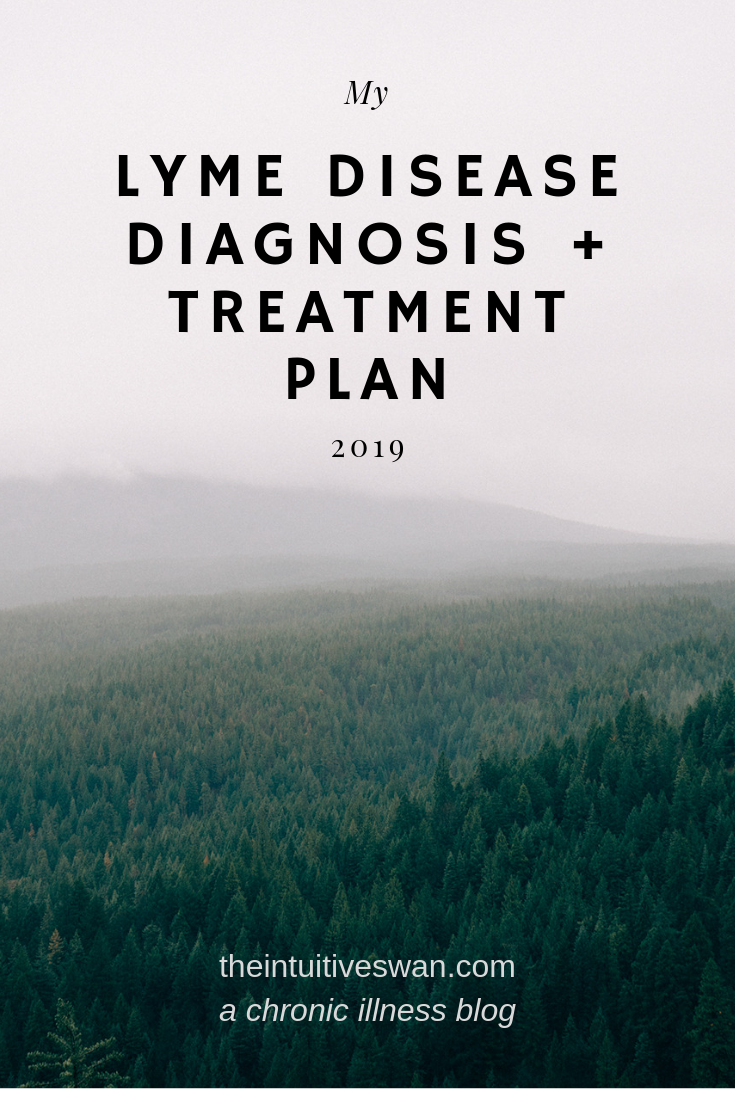lyme diagnosis + treatment
Last winter, I hit a new low. For years I’d been struggling with a rollercoaster of symptoms from my autonomic disorder of Vasovagal Syncope, but this time, I felt worse. Even after having a pacemaker implanted, my fatigue and brain fog continued. Then things got worse – heart palpitations, dizziness, chills and night sweats, memory issues, even a little anxiety.
Most days, I could barely keep my eyes open or get out of bed. My muscles were weak, my body felt heavy – as if I was walking through water with anchors strapped to all my limbs.
Occasionally, I’d have a good day – walking to work, practicing yoga, and running errands – all pretty low-key activities. On these days, I’d convince myself that my symptoms were just symptoms of a virus or a syncope flair.
I was frustrated and tired of not feeling like myself so I visited a new doctor, who guessed that I had Lyme disease. Sure enough, I tested positive for the Lyme antibodies through the Western Blot test – IgG and IgM positive. Fortunately, I did not appear to have any co-infections (however, false negatives are very common for these bacterial co-infections). A few months later, I discovered that I also had acute (aka current) Epstein Barr virus - the adult form of mono. Apparently, reactivation of past and dormant viruses is common with Lyme because the immune system is too compromised to continue producing antibodies to keep viruses, such as mono, at bay.
While Lyme disease is notoriously difficult to diagnose, finding an effective form of treatment is even trickier (check out this blog post to learn more about why this is the case). I’ve heard about doctors who joke about using an 8-ball to pick which treatment method to first pursue!
Lyme disease attacks all the body’s systems – but I’ve become a believer in that the gut is the key to a healthier immune system. While I’m a supporter of traditional and modern medicine (no herb or diet can fix a heart that stops beating), I’m also a firm believer in the benefits of healing the body through natural remedies. There’s the more traditional approach of treating with long-term antibiotics, while alternative approaches mostly center on the use of herbs and supplements. I’ve been incorporating both approaches with the goal of safely killing the Lyme infection and improving my immune system so that it’s more adept at fighting off invaders.
In general, my journey to overcome Lyme disease, as well as an acute case of Epstein-Barr virus, revolves around the five following factors:
Repairing my gut through an anti-inflammatory diet.
Lyme diseases causes persistent inflammation (headaches, muscle aches, brain fog, etc.); therefore, food groups that cause even the slightest sensitivities or allergies should be eliminated – e.g. gluten, dairy, sugar, caffeine, alcohol. You can learn more about my anti-inflammatory diet in this post.
Targeting my active Lyme infection with herbs, supplements and drugs.
The doctor who first diagnosed me with Lyme referred me to an herbalist who recommended the tinctures eleuthero and spiroyld compound, as well as a mitonutrient, fish oil EPA DHA, Vitamin D3/K2 and a probiotic. After visiting the herbalist, I found Dr. Cathie Dunal, an amazing Lyme Literate Doctor (LLM) who practices in Northbrook, Illinois. She prescribed the following treatment protocol:
Antibiotics
Antibiotics can be effective in early-stage Lyme disease, chronic Lyme disease with severe heart or brain symptoms, or when nothing else works. However, a prolonged use of antibiotics can cause more harm by disrupting protective barriers in the gut. However, given that it is unclear when I contracted Lyme disease, we optimistically decided to start with four months of doxycycline.
Artemisia
A common Lyme co-infection is Babesia which is caused by a blood parasite closely related to malaria. Artemisia is an herbal compound that helps fight off infection while regulating the immune system. In some studies it’s been shown “to suppress the production of autoantibodies and reduce inflammatory molecules. This may help block some of the autoimmune reactivity that occurs with Lyme, as well as kill off some of the microbes.”
Boluke
Used to help balance the body's clotting system and maintain a healthy circulation, Boluke helps to reduce joint stiffness and pain from inflammation. It’s a purified mix of enzymes from earthworms that helps break down biofilm. Biofilm is a protective sheath that covers the Lyme bacteria, making it difficult for the immune system to recognize and fight the infection.
Methyl CPG
A certain percentage of the population is unable to metabolize the un-methylated forms of specific B vitamins – mainly folate and B12. Methyl CpG is an active form of these B vitamins in their methylated form that helps maintain DNA repair, optimal neurotransmitter production, homocysteine balance for cardiovascular health and the recycling of molecules that are required for detoxification and a healthy inflammatory response.
PharmaGABA
“GABA” is a key molecule that helps calm the brain. GABA is primarily used to calm the nervous system, decrease anxiety and help people to fall asleep and sleep more soundly.
Low-Dose Naltrexone
In small doses, naltrexone has an immune-modulating effect that reduces pain and inflammation in the brain. Many people with Lyme disease experience better sleep, improved brain function, reduced muscle pain and more energy.
Cannabidiol Oil (CBD)
An all-natural constituent of hemp oil, CBD has been shown to have positive health and therapeutic benefits without causing physcoactive affects. On my really bad days when it’s hard to walk or move, CBD oil is a LIFESAVER. Primary benefits for those with Lyme disease include reducing inflammation, nausea, and anxiety, improving digestive issues and sleep function, as well as helping to prevent seizures.
Recommended by my doctor, my go-to brand of CBD oil is Saving Grace Oil, a company known for its strict quality control through third party testing of each batch to check for potency, pesticides, heavy metals and microbial levels. (TIP: when shopping for hemp oil products, always look at the total milligram content and the cost per milligram. In terms of cost per milligram of phytocannabinoids, Saving Grace Oil is the most affordable and high-quality product that I’ve found on the market.) Use code KELSEY15 to receive 15% off your order!
Embracing acupuncture and detox methods through infrared saunas, hyperbaric oxygen chambers and cryotherapy.
Acupuncture
A form of traditional Chinese medicine, acupuncture can help reduce pain and increase the production of endorphins. From my three years of on and off again acupuncture - I’ve seen mixed results, probably because my body was so sick and depleted that the acupuncture benefits were too subtle to recognize. However, cupping and gua sha have continued to be a great detox method to release built up toxins.
Hyperbaric Oxygen
While the air we breathe is only 20% oxygen and 80% nitrogen gas, pure oxygen helps kill toxic bacteria. Hyperbaric oxygen delivers 100% oxygen in a pressurized chamber and has been shown to reduce Lyme symptoms and pain. (TIP: make sure that the chamber isn’t a “re-breathe” chamber, otherwise, you’ll be inhaling the oxygen that you just “detoxed” from your body.")
Infrared Saunas
Brief episodes of elevating the body’s temperature have been shown to inhibit microbe reproduction and enhance the productiveness of other treatments. Similar to when a fever is fighting an infection, raising body temperature in an infrared sauna increases blood flow and sweating which helps to remove toxins (including heavy metals), enhance immune function and stimulate endorphin production. I started this detox method with short episodes (20 minutes) of less intense heat with the goal of building up my stamina and being careful not to overdo it.
Decreasing stress and getting more sleep.
Life itself can be stressful – life with a chronic illness is even more challenging. From managing treatments for recovery, to maintaining jobs, relationships, emotional stability and any semblance of a normal life, it’s overwhelming, to say the least. Most people are healthy when they first get infected with Lyme disease and don’t remember the bite or initial infection – the microbe is present, but not causing any harm. In these cases, Lyme appears gradually, as cumulative stress and symptoms slowly cause the immune system to deteriorate. In other cases, the onset of Lyme can be triggered by other acutely stressful health conditions or events.
Whether you’re healthy or sick, a good night’s sleep is the foundation for the resilience needed to recover from just about any illness. For as long as I can remember, I’ve always needed more sleep than the rest of my family and friends. I would LOVE to be able to function on only 6 or 7 hours of sleep, but my body has always required closer to 9 or 10 hours. Since college, I’ve always been stressed about having to share a bed or room with other people because I knew I’d likely go to bed earlier and wake up later.
Now with my symptoms of chronic fatigue, I’m sleeping anywhere from 12 to 15 hours a day. However, occasionally I have a few nights of insomnia which makes me MISERABLE since sleep deprivation leads to brain fog, poor memory and concentration, and need I say… irritability. Did I mention the night sweats?
To sum it up.
Healing Lyme takes time. Some days I continue to be frustrated at the lack of progress, but I remind myself that I’m only on month four of treatment, which in the grand scheme of Lyme recovery, is just barely scratching the surface. Generally, it’s recommended to stay on natural medicines for a minimum of 6 months to see if they’re helping. Natural medicines do help speed recovery, but healing from Lyme is still a long and arduous journey.
While my road to recovery isn’t guaranteed, I will continue to share the best of what I’ve learned about treating Lyme disease through this blog.
PIN IT FOR LATER:

